What Is The Errorcode Dropbox 8737.idj.029.22? Decrypting And Fixing The Error
Nov 26, 2025

Nov 26, 2025

Nov 25, 2025

Nov 25, 2025

Nov 24, 2025

Nov 24, 2025

Nov 22, 2025

Nov 22, 2025

Nov 21, 2025
Sorry, but nothing matched your search "". Please try again with some different keywords.


The four main website traffic sources are direct, referral, paid, and organic. Organic traffic—people visiting the site via unpaid search engine results—is typically considered the most valuable source.
If you wanna know how to increase organic traffic, then it includes users searching for information or solutions related to your offerings. As such, it is a crucial component of the growth and success of a website. Furthermore, understanding these sources of traffic can help prioritize efforts and resources.
Direct traffic is when users type your website URL directly into their browser. Referral traffic comes from links on other websites.
Additionally, paid traffic generated through advertisements can provide immediate results but requires continuous investment. In contrast, organic traffic builds over time and offers long-term value when nurtured through effective strategies.

Organic traffic is the number of visitors who find your website through unpaid search engine results. It is not the same as paid search traffic, which is advertisement-driven and usually based on the relevance of your content to user queries.
Search engines such as Google, Bing, and Yahoo rank web pages based on keyword usage, quality of content, and site authority. Moreover, organic traffic reflects your site’s visibility and relevance in SERPs.
When the site fulfills the target audience’s needs to its best capability, organic traffic hits a peak level. In that case, such traffic becomes sustainable and free. For these reasons, it acts as the most vital part of the digital marketing strategy of every small or big enterprise.
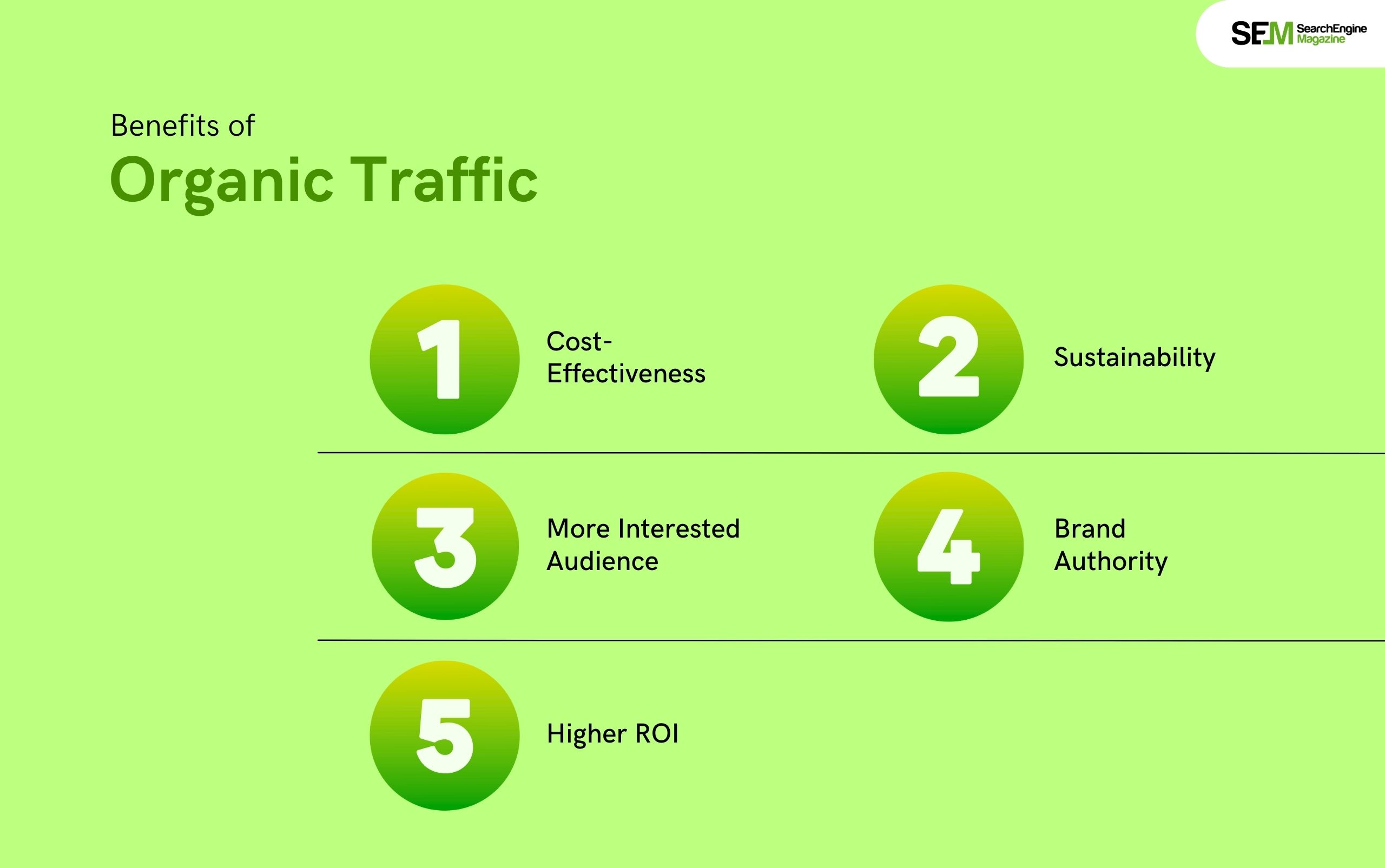
The concept of organic traffic is not just a myth, some of it is in our control. But we need to work on it and what better way to stay motivated than learn about the benefits? Here are a few benefits of organic traffic that you should know about, to increase your website traffic.
First, paid advertising is different because it costs a lot of money to put in directly for its usage. But organic traffic never does so after the site establishment.
A rightly optimized website can generate sustainable long-term traffic for free. Organic traffic builds over time with improved content and your site’s authority.
The audience coming through organic search is generally very interested and engaged because they have gone through the effort to look for your content. In general, that tends to work out in higher conversion rates and greater customer loyalty.
That also helps create your brand as an authority within the niche. Hence, there is a fairly good level of trust and awareness from the audience because they are being repeatedly exposed.
Finally, the organic traffic source is a prequalified lead, saving the customer acquisition cost and maximizing ROI.
Organic traffic is one of the best sustainable growth strategies, with continuous visibility and prospects. Additionally, it is a long-term strategy that will increase and compound over time.
First, keyword research is finding out the search terms used by your target audience. Keywords lay the foundation for your content and SEO strategy, making your website relevant to user intent and ranking high in the search results.
Additionally, using the right keywords will align the right keywords to the content, which means better rankings and attracting the right audience.
Secondly, on-page SEO is a term that defines optimizing individual pages on your site for ranking better in search results. This type of SEO focuses on making your content accessible and relevant to search engines and users.
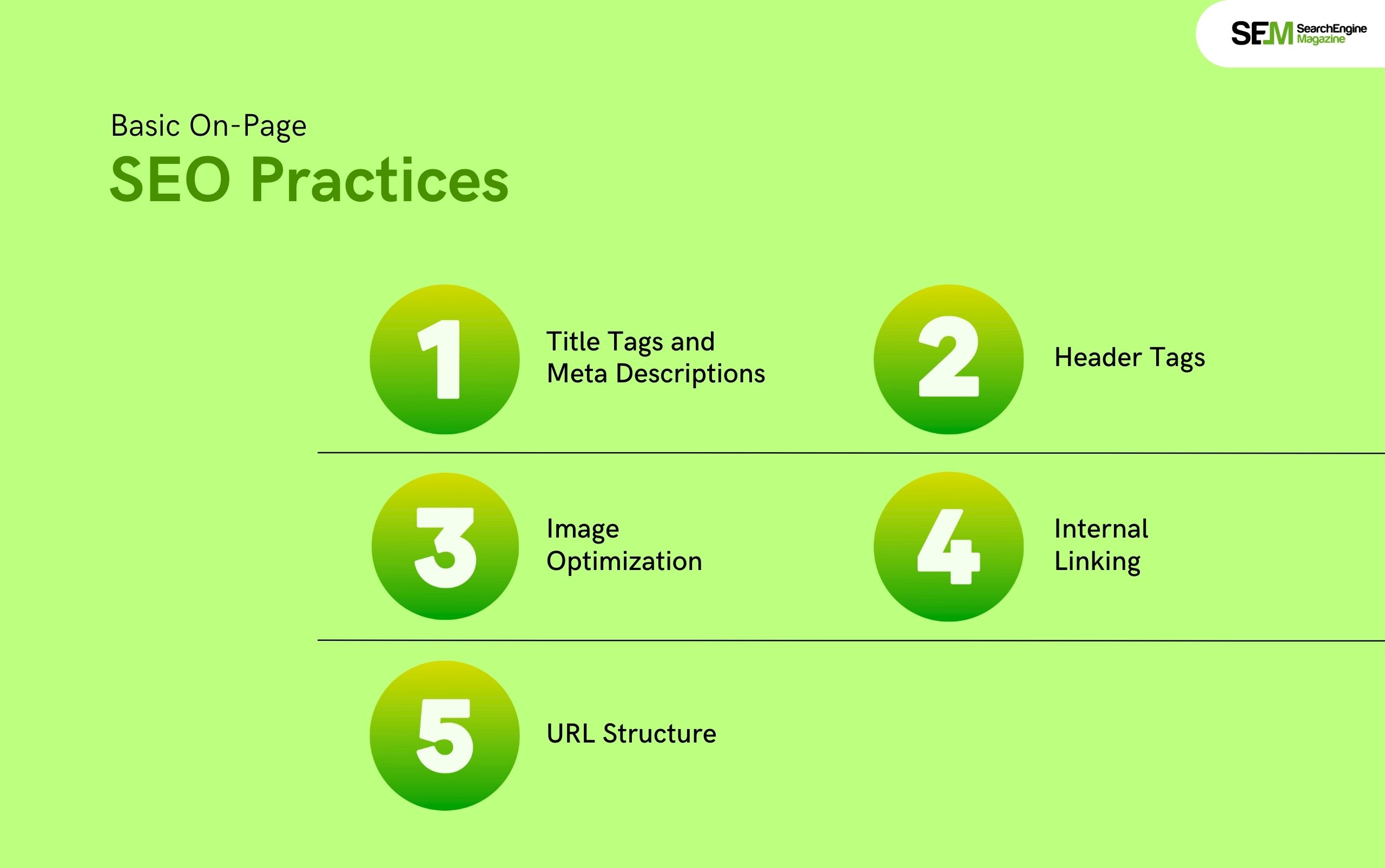
Let us learn more about on-page SEO practices and their inferences towards driving traffic on your website. Furthermore, these elements integrate the SEO practices with your daily activities on the website.
Furthermore, good on-page SEO makes your content accessible, engaging, and optimized for search engines, improving rankings and user satisfaction.
High-quality, valuable content will attract visitors to your site and keep them there. Moreover, it also enhances your credibility and raises the chances of earning backlinks from quality websites.
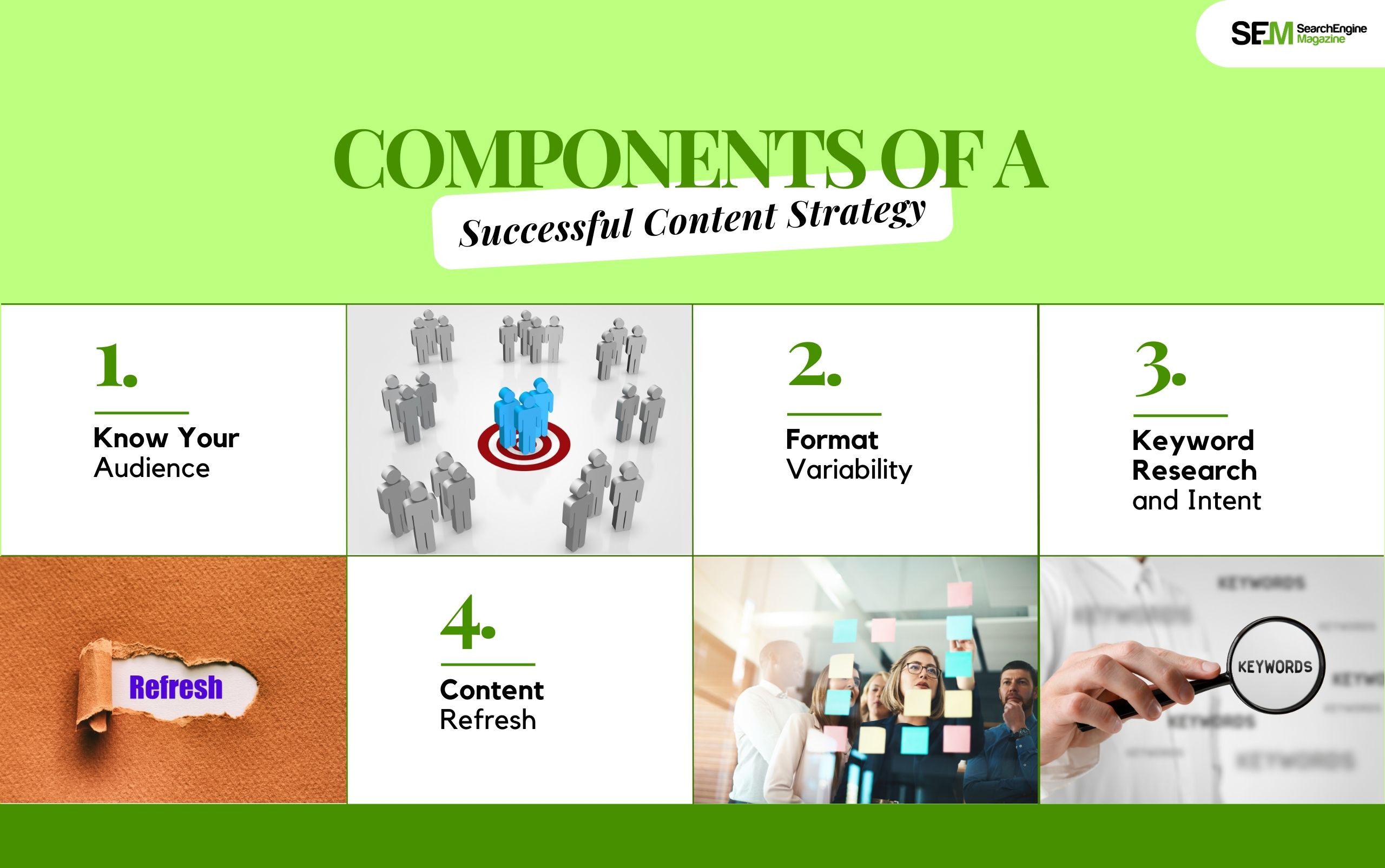
Are you wondering about creating a successful content strategy? Let’s check out the components of a successful content strategy and how to be effective in them.
Any strategic organic traffic forms its very foundation through engaging and well-researched content. Additionally, it makes your site a trusted resource for your audience.
Technical SEO will ensure that the site is within the technical parameters of the search engine. For instance, site speed, mobile-friendliness, and structure of URLs are among the factors optimized to enable the site to be crawled and indexable by the search engine.
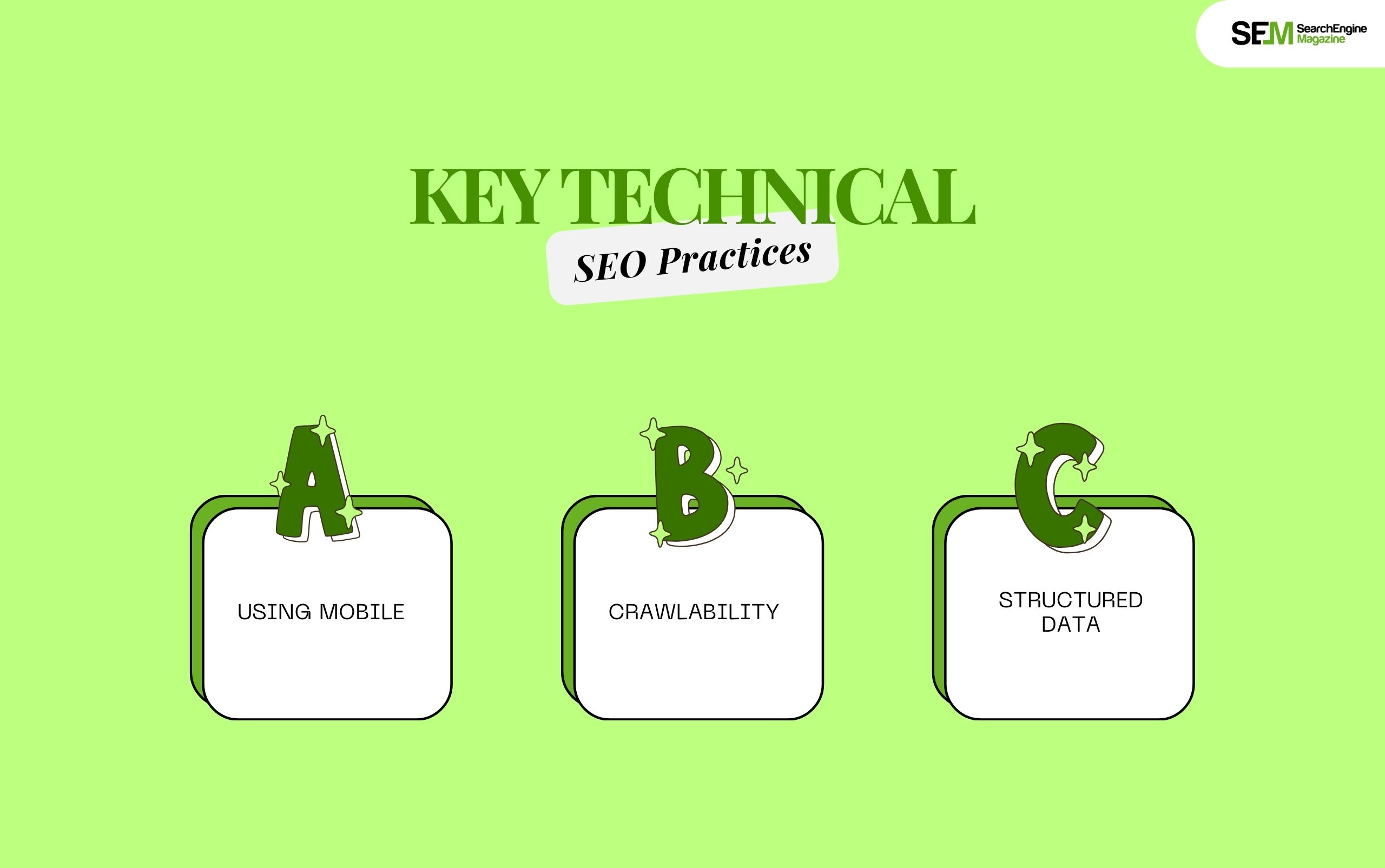
The following factors are site speed and analysis for performance using Google Page Speed Insights or GTmetrix.
Faster sites generally mean a bigger user experience as well as rankings. Mobile Optimization-Ensure your site works well on different devices.
A solid technical base ensures your site is both accessible and search engine-friendly for users. Furthermore, this means it can enjoy a boost in its overall performance.
Backlinks are the incoming links coming from other sites to your content. It informs the search engine that your website is trustworthy and authoritative and improves your ranking to a huge extent.
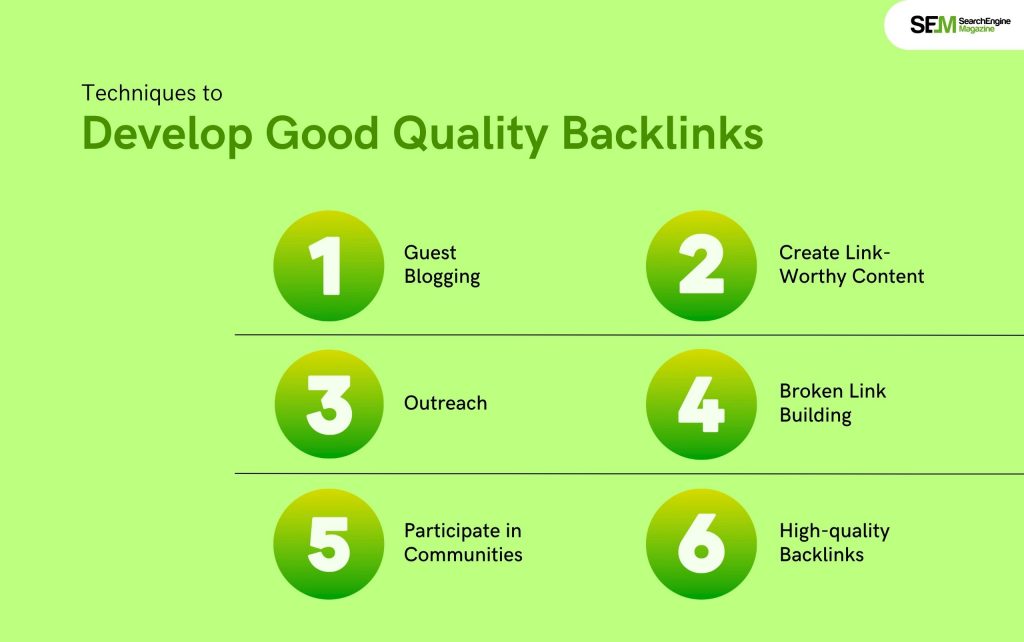
Social media helps amplify the content’s visibility and thus increases organic traffic indirectly. The shares and engagements increase their value and, although not a direct ranking factor, contribute to your online presence and authority.
Share blog updates, infographics, videos, and more consistently to keep your audience interested. We are highlighting some of the best practices for social media because they will guide you efficiently towards better exposure and reach!
Organic traffic supports general brand awareness, engagement, and, in a roundabout way, your general organic goals.
To track how well your tactics of organic traffic are performing, use analytics tools to measure performance and spot imperfections. If you are wondering why, it is important to track organic traffic, you must realize how organic traffic can actually increase your overall revenue.
Let me share with you the tools which you can use to track or analyze organic traffic on your website. Furthermore, it also provides more insights into how your website is performing and what are the elements that are pulling organic traffic.
Regular analysis helps refine your strategy, ensuring continuous growth and optimization of your organic traffic efforts.
Organic traffic will increase only based on strategic plans, regular implementations, and analytical assessments.
Your site’s visibility may be increased based on proven SEO strategies such as keyword research and on-page optimizations, creating and optimizing quality content, and acquiring quality backlinking.
Lastly, adapting to the evolving nature of each medium will help you properly use your social media streams and tracking tools.
Organic traffic is more than just a number; it’s finding the right crowd interested in your product. With enough commitment, the right strategy, and constant refinement, you can see sustainable growth for your website.
Nabamita Sinha loves to write about lifestyle and pop-culture. In her free time, she loves to watch movies and TV series and experiment with food. Her favorite niche topics are fashion, lifestyle, travel, and gossip content. Her style of writing is creative and quirky.
View all Posts
What Is The Errorcode Dropbox 8737.idj.029...
Nov 26, 2025
How Digital Marketing Helps Boost Online Stra...
Nov 25, 2025
Securing Your SEO Strategy: Cybersecurity Tip...
Nov 25, 2025
Wayback Machine Alternative: Which Is The Bes...
Nov 24, 2025
Lifewireless.com Activate: How To Activate Th...
Nov 24, 2025

